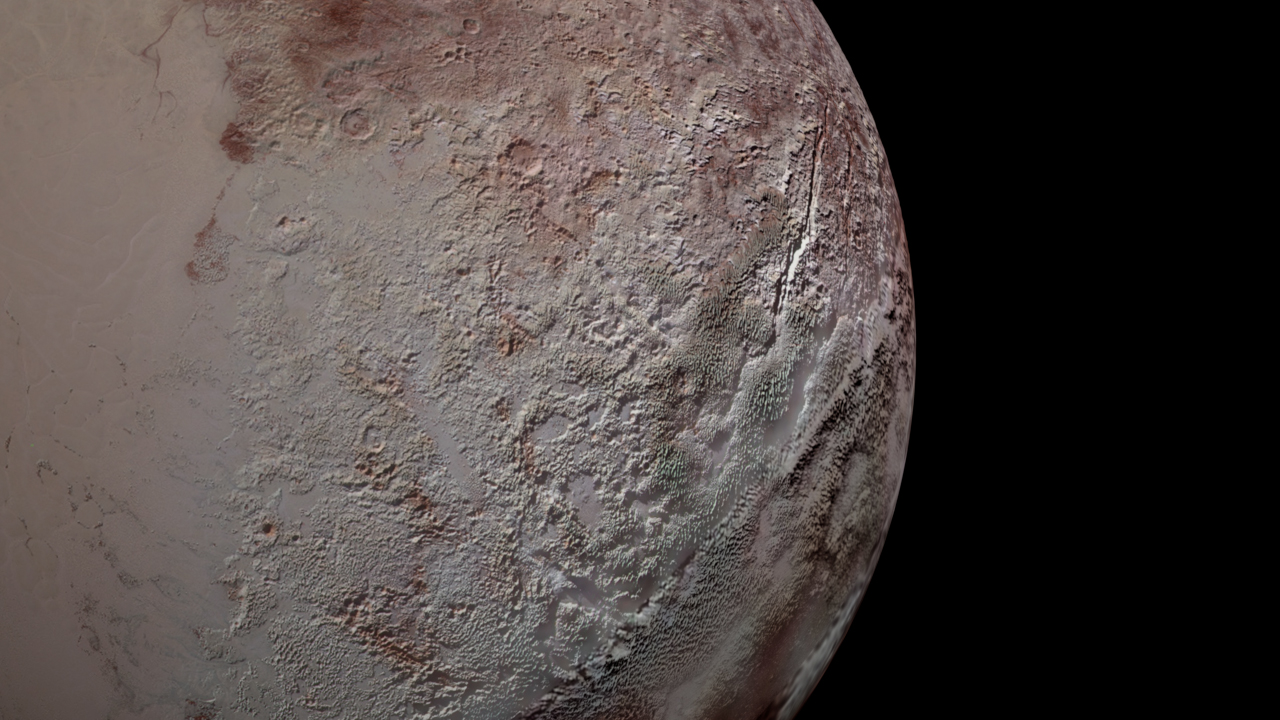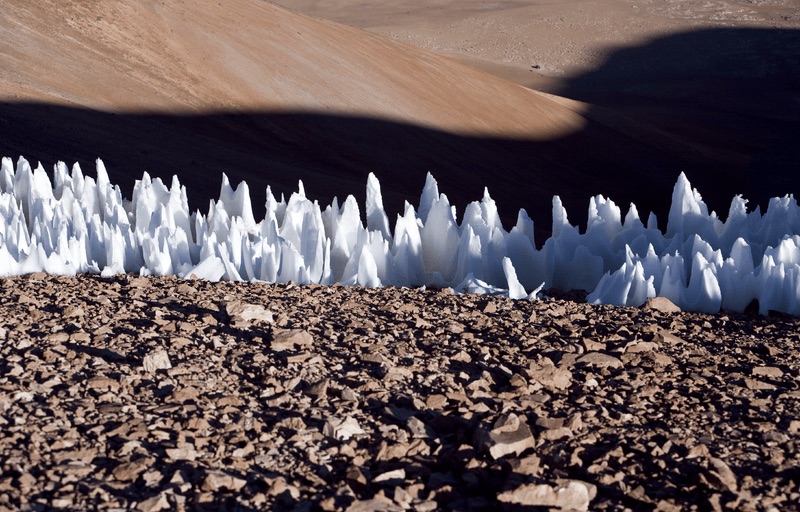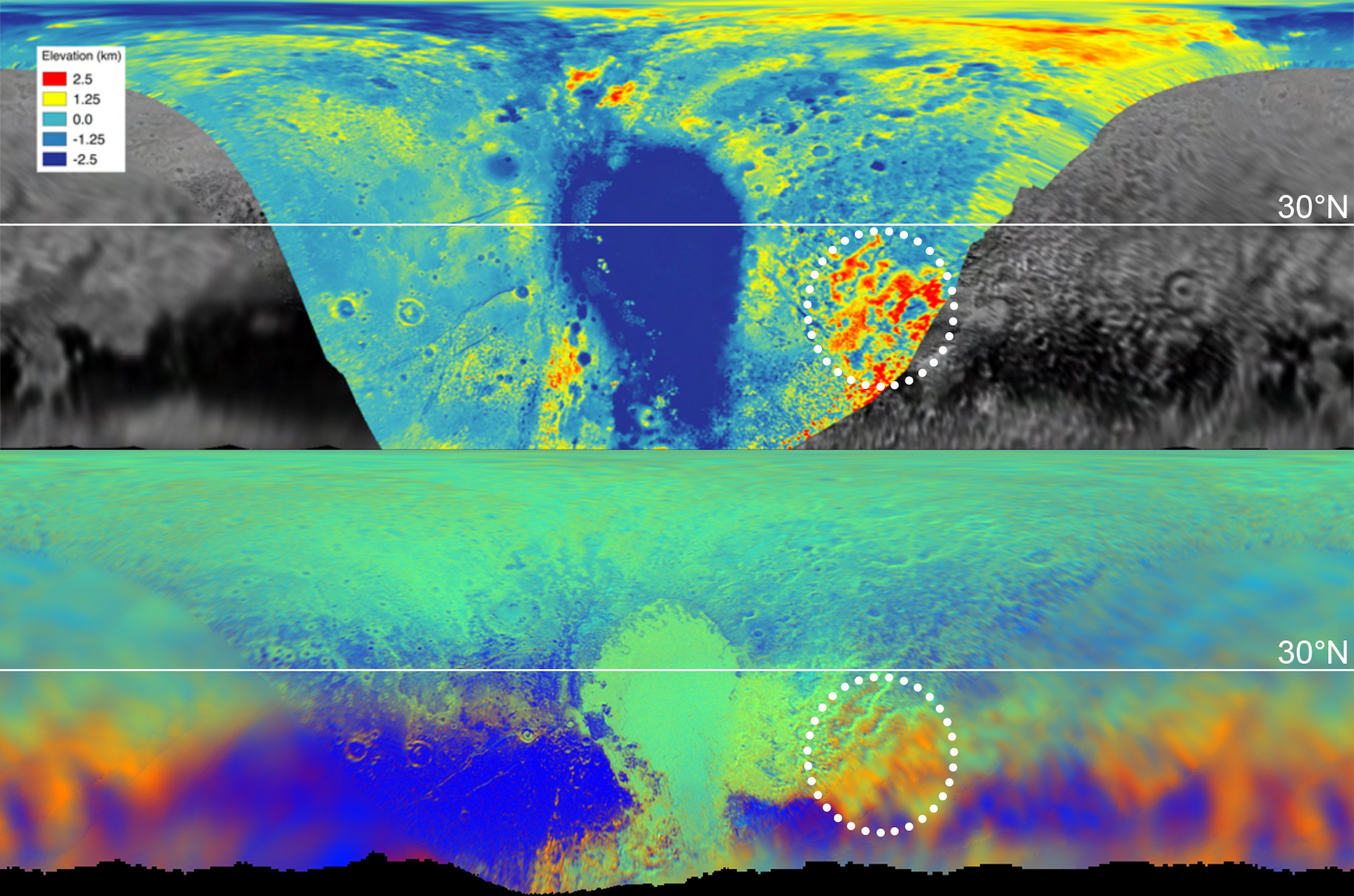Pluto's 'Skyscrapers': What's Responsible for Dwarf Planet's Giant Ice Blades
Pluto's surface hosts blades of ice that soar to the height of skyscrapers — and researchers have narrowed down exactly how the dramatic features form.
According to new research, the blades are made mostly of methane ice, and form similarly to (much shorter) spikes of snow and ice on Earth.
When the New Horizons spacecraft flew by Pluto in July 2015, researchers observed an astonishing variety of terrains across the dwarf planet. Flat and cratered areas on the dwarf planet's surface point to its varied geological activity, composition and evolution over time.
The jagged spikes targeted in this latest study form at the highest altitudes on Pluto's surface, near its atmosphere, where methane is able to freeze out of the atmosphere — skipping straight from gas to solid without ever becoming liquid. When the climate is a bit warmer, parts of the methane ice sublimate away, heading straight back to gas form, according to the new study.
"When we realized that bladed terrain consists of tall deposits of methane ice, we asked ourselves why it forms all of these ridges, as opposed to just being big blobs of ice on the ground," Jeffrey Moore, a New Horizons team member and lead researcher on the new work, said in a statement. "It turns out that Pluto undergoes climate variation and sometimes, when Pluto is a little warmer, the methane ice begins to basically 'evaporate' away."
On Earth, such structures are called penitentes, and stretch just a few meters in height in high-altitude regions along the planet's equator. Slight irregularities can turn into dramatic spikes of snow as the structures' surfaces concentrate sunlight toward certain regions, sublimating some parts faster than others and leading to longer and spikier forms.
The presence of penitentes on Pluto tell researchers more about how its surface and air temperature change over time, according to the statement, and the link between methane's presence and high elevations can help researchers map the dwarf planet's topography in places where they have lower-resolution views.
Breaking space news, the latest updates on rocket launches, skywatching events and more!
The new work will appear in an upcoming issue of the journal Icarus.
Email Sarah Lewin at slewin@space.com or follow her @SarahExplains. Follow us @Spacedotcom, Facebook and Google+. Original article on Space.com.

Sarah Lewin started writing for Space.com in June of 2015 as a Staff Writer and became Associate Editor in 2019 . Her work has been featured by Scientific American, IEEE Spectrum, Quanta Magazine, Wired, The Scientist, Science Friday and WGBH's Inside NOVA. Sarah has an MA from NYU's Science, Health and Environmental Reporting Program and an AB in mathematics from Brown University. When not writing, reading or thinking about space, Sarah enjoys musical theatre and mathematical papercraft. She is currently Assistant News Editor at Scientific American. You can follow her on Twitter @SarahExplains.



